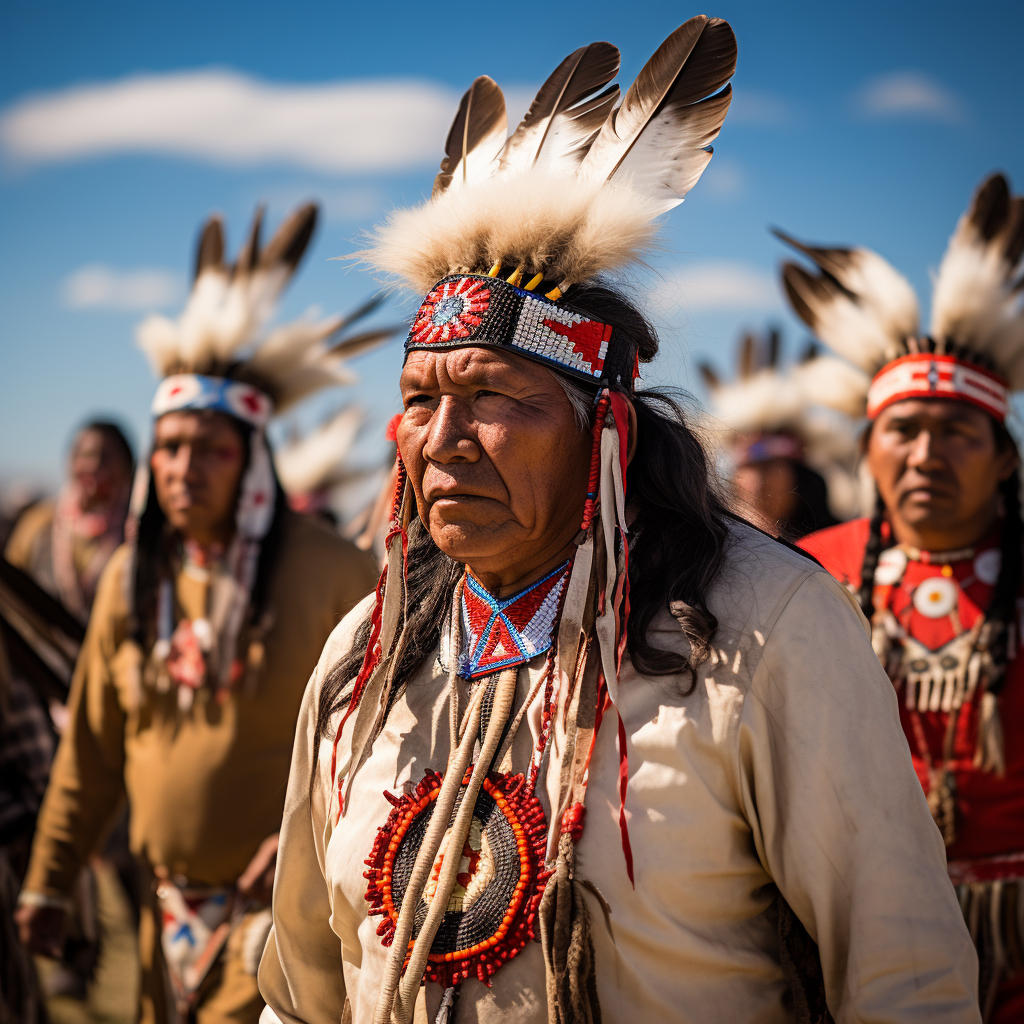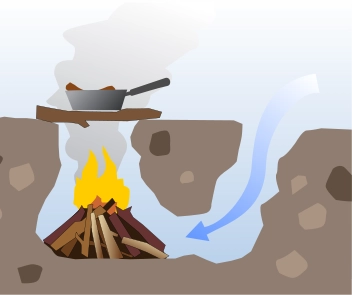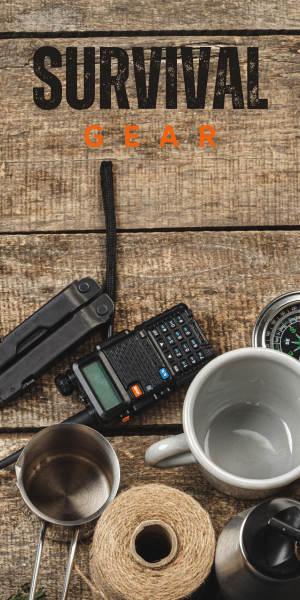The Dakota Fire Hole is a unique and efficient method of building a fire, especially valued in outdoor and survival situations. This technique involves digging a hole in the ground, which serves as the main chamber for the fire. Beside it, a smaller, narrower tunnel is excavated that connects to the main chamber at the bottom. This tunnel acts as an air intake, supplying the fire with oxygen.
One of the key benefits of the Dakota Fire Hole is its ability to produce a hot, efficient burn while minimizing smoke and light visibility, making it ideal for low-profile camping or evasion scenarios. This method also shields the fire from wind, enhances the heat output, and leaves less trace of a fire after it’s extinguished. In survival situations, these characteristics can be crucial. The Dakota Fire Hole is thus highly regarded in wilderness survival skills for its practicality, efficiency, and minimal environmental impact.
Historical Context
The Dakota, Lakota, and Nakota Sioux Nations, often collectively referred to as the Sioux, have a rich history that significantly influenced their lifestyle, culture, and survival strategies. These tribes originally inhabited the Great Plains region of North America, an area that spans across what is now known as the United States and Canada. This vast region, characterized by its rolling hills and grasslands, shaped their way of life, particularly in terms of hunting and survival.
The Sioux were traditionally nomadic, moving across the plains to follow the migrations of buffalo, which were central to their survival. They developed exceptional skills in hunting these large animals, using every part of the buffalo for food, clothing, shelter, and tools. The buffalo was not just a source of sustenance but held deep spiritual significance to the Sioux.
In addition to buffalo hunting, the Sioux were adept at fishing and gathering wild plants, which supplemented their diet. Their knowledge of the land and its resources was extensive, allowing them to thrive in a challenging environment.
Their social structure was complex, with a strong emphasis on community and family. The Sioux were known for their elaborate ceremonies and spiritual practices, which were closely tied to their understanding of the natural world.

Over time, the Sioux faced significant challenges, particularly with the westward expansion of European settlers in the 19th century, leading to conflicts and drastic changes in their traditional way of life. Despite these challenges, the Sioux Nations have preserved many aspects of their culture and continue to play an important role in the historical and cultural landscape of North America.
How Does a Dakota Fire Hole Work?
The Dakota Fire Hole is an innovative fire-building method that utilizes a two-pit system connected by a tunnel. The design is both simple and ingenious, ensuring efficient combustion and minimal environmental impact.
The primary component of the Dakota Fire Hole is a larger pit, which serves as the main combustion chamber. This pit is typically dug deep enough to accommodate the fire size, usually around a foot deep and wide. The depth and shape of the pit concentrate the heat, making the fire burn hotter while requiring less fuel.

Adjacent to this main pit, a smaller, narrower pit is excavated. This secondary pit is connected to the bottom of the main pit by a horizontal tunnel. The smaller pit functions as an air intake, drawing fresh air into the tunnel due to the heat-induced vacuum created in the main pit. This airflow provides a steady supply of oxygen to the fire, enhancing combustion and resulting in a more efficient, hotter fire with less smoke.
This unique setup also has practical advantages. The fire is less visible and produces less smoke, making it ideal for situations where discretion is necessary. Additionally, the fire is more sheltered from the wind, and its heat is more concentrated, useful for cooking or warmth in survival scenarios. The Dakota Fire Hole leaves minimal trace once filled in, aligning with Leave No Trace principles, making it environmentally friendly for outdoor enthusiasts.
Disadvantages of the Dakota Fire Hole
While the Dakota Fire Hole offers several advantages for discreet and efficient fire building, it also presents some notable disadvantages, primarily concerning its construction time, location limitations, suitability for warmth, and performance in adverse weather conditions.
Time-Consuming Construction: One of the primary drawbacks of the Dakota Fire Hole is the time and effort required to construct it. Unlike surface fires that can be quickly built with minimal preparation, this method necessitates digging two pits and a connecting tunnel. This process can be labor-intensive and time-consuming, especially in hard, rocky, or root-filled soil. The need for tools like a shovel or a digging stick adds to the preparation time.
Location Limitations: The effectiveness of a Dakota Fire Hole is highly dependent on the terrain and soil type. In areas with rocky, hard, or root-dense soil, digging the pits and tunnel can be extremely challenging. Additionally, in environments with a high water table, such as near rivers or in marshy areas, the pit may quickly fill with water, rendering it unusable.
Limited Warmth Dispersion: While the design of the Dakota Fire Hole concentrates heat for cooking, it also limits the dispersion of warmth. Traditional campfires radiate heat in all directions, providing warmth to a larger area. The Dakota Fire Hole, with its below-ground level fire, directs most of the heat upwards, which can be less effective in warming the surrounding area, making it less suitable for heating purposes in cold conditions.
Performance in Bad Weather: The Dakota Fire Hole’s performance can be significantly hindered in adverse weather conditions. Heavy rain can flood the pit, extinguishing the fire or making it impossible to maintain. High winds, while partly mitigated by the fire’s below-ground nature, can still disrupt the airflow through the tunnel, reducing the fire’s efficiency and potentially causing smoke to billow out erratically.
In conclusion, while the Dakota Fire Hole is a clever and efficient method for certain situations, its practicality is limited by environmental factors, the effort required for setup, and its specific utility considerations. These factors should be weighed when deciding whether this fire-building method is appropriate for a given outdoor scenario.
Safety Precautions
When building and using a Dakota Fire Hole, adhering to safety precautions is crucial to prevent accidents and minimize environmental impact. Here are some key safety measures:
1. Choose a Safe Location: Select a spot away from dry grass, bushes, tree roots, and other flammable materials. Ensure there’s enough clearance above to avoid accidental fires, particularly avoiding areas under low-hanging branches.
2. Check Local Regulations and Conditions: Always be aware of local fire regulations and weather conditions. In areas with high fire risk or during dry seasons, avoid making fires altogether.
3. Adequate Ventilation: The Dakota Fire Hole relies on proper airflow. Ensure the air intake tunnel is clear of obstructions to prevent smoke buildup and ensure efficient combustion.
4. Fire Size Control: Keep the fire size manageable. A smaller, well-maintained fire is safer and easier to control and extinguish.
5. Have Water or Sand Handy: Always have water, sand, or dirt nearby to extinguish the fire quickly in case of emergency.
6. Monitoring: Never leave the fire unattended. Continuous monitoring is essential to prevent the fire from getting out of control.
7. Extinguishing the Fire Completely: Before leaving the site, ensure the fire is completely extinguished. Douse it with water, stir the ashes, and check for any remaining heat or embers.
8. Filling in the Hole: Once the fire is completely out, fill the hole back in to restore the site and leave no trace.
By following these safety precautions, you can enjoy the benefits of a Dakota Fire Hole while ensuring both personal safety and environmental responsibility.
Step-by-Step Guide to Building a Dakota Fire Hole
Building a Dakota Fire Hole requires careful planning and execution. Here is a detailed step-by-step guide to constructing one:
1. Selecting a Location and Preparing the Site:
- Choose the Right Spot: Look for a flat area away from dry grass, bushes, and tree roots. Avoid locations under low-hanging branches.
- Check the Soil: The soil should be easy to dig into. Avoid rocky or root-filled ground. Also, ensure the area isn’t prone to flooding or high water tables.
- Safety First: Ensure you’re in a zone where open fires are permitted and be aware of the local fire regulations and weather conditions.
2. Constructing the Fire Hole:
- Dig the Main Pit: Start by digging a hole about one foot deep and wide. This will serve as your main combustion chamber. The depth can vary based on your needs, but keep in mind deeper pits concentrate heat better.
- Shape the Pit: The walls of the pit should be as vertical as possible to contain the fire and concentrate the heat.
3. Creating the Oxygen Chamber:
- Digging the Air Intake: About one foot away from the main pit, start digging a smaller, narrower pit. This should also be around one foot deep.
- Connecting the Tunnels: Dig a connecting tunnel from the bottom of the air intake pit to the bottom of the main fire pit. This tunnel should be large enough to allow a steady flow of air but not so large that it destabilizes the structure of the pits.
- Ensure Proper Alignment: The air intake tunnel should slope slightly upward as it goes towards the main pit. This helps in drawing air into the fire more efficiently.
4. Using the Dakota Fire Hole:
- Building the Fire: Start your fire in the main pit using small kindling and gradually add larger pieces of wood. The fire should be kept compact and manageable.
- Adjusting Airflow: If you notice the fire is not burning efficiently, adjust the size of the air intake or clear any obstructions in the tunnel.
5. Extinguishing and Cleaning Up:
- Put Out the Fire Completely: When finished, douse the fire thoroughly with water, stir the ashes, and check for residual heat or embers.
- Fill in the Holes: Restore the area by filling the holes with the original soil and leave no trace of the fire hole.
Remember, while the Dakota Fire Hole is efficient and discreet, it requires more time and effort to construct compared to a traditional campfire. Its effectiveness and safety depend on proper construction and adherence to safety precautions.
Lighting and Extinguishing the Fire
Lighting the Fire:
- Gather Materials: Collect dry tinder, kindling, and larger pieces of wood. Arrange the tinder and kindling in the bottom of the main pit.
- Start Small: Light the tinder with a match or lighter. As the tinder catches fire, gently blow to provide additional oxygen, which helps the fire grow.
- Add Fuel Gradually: Once the kindling starts burning, gradually add larger pieces of wood. Ensure the fire remains manageable and doesn’t get too large for the pit.
Extinguishing the Fire:
- Allow Time to Cool: Start by allowing the fire to burn down to ashes if time permits.
- Douse with Water: Pour water over the ashes, ensuring all embers and coals are soaked. Stir the ashes with a stick to uncover any hot spots and pour more water as needed.
- Check for Heat: After dousing, feel for heat with the back of your hand near the surface (without touching the ashes) to ensure no heat remains.
- Fill the Pit: Once the fire is completely out and cool, fill the pit with the original soil and return the area to its natural state.
Safety Tip: Always have enough water or a fire extinguisher nearby when managing a fire, and never leave the fire unattended.
FAQ
What is a Dakota fire hole?
A Dakota fire hole is an efficient, low-visibility method for building a fire outdoors. It involves digging a main combustion chamber (a pit) and a smaller air-intake pit connected by a tunnel. This design facilitates a concentrated, well-ventilated fire that is more efficient and discreet than traditional surface fires.
What are the benefits of a Dakota fire pit?
The benefits of a Dakota fire pit include efficient fuel usage, reduced smoke, minimal visibility, protection from wind, and concentrated heat, ideal for cooking. Its design allows for better airflow, resulting in a hotter and cleaner burn. The pit’s below-ground construction leaves less trace, aligning with Leave No Trace principles, and is advantageous in situations requiring discretion.
What are the cons of the Dakota fire hole?
The cons of a Dakota fire hole include its time-consuming construction, unsuitability for warming large areas, poor performance in wet conditions, and location limitations due to soil type. Digging the pits can be labor-intensive, especially in hard or rocky ground. The fire’s heat is concentrated upwards, reducing its efficacy for general warmth, and heavy rain can easily flood the pits.
How do you dig a Dakota fire hole?
To dig a Dakota fire hole, start by excavating a main pit about one foot deep and wide for the fire. Then, dig a smaller, narrower air-intake pit nearby, connecting it to the bottom of the main pit with a horizontal tunnel. Ensure the tunnel slopes upward towards the main pit for efficient airflow, and that both pits are properly aligned for optimal oxygen supply to the fire.
In the end :
The Dakota Fire Hole is a highly efficient, environmentally friendly method for building a fire, especially suited for outdoor enthusiasts and survival situations. Its design, featuring a main combustion chamber and a connected air-intake pit, allows for a hotter, cleaner burn with less smoke and minimal environmental impact. While it offers significant advantages in terms of fuel efficiency and low visibility, it also presents challenges like labor-intensive construction, limitations in certain terrains, and reduced warmth dispersion. The Dakota Fire Hole exemplifies a balance between practicality and environmental consciousness, making it a valuable skill for responsible outdoor activities and survival techniques.














